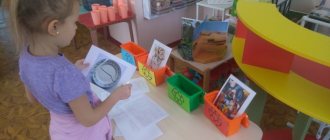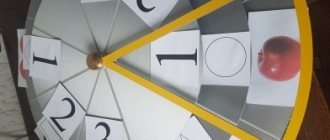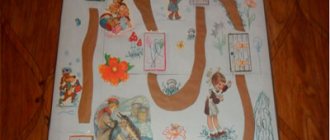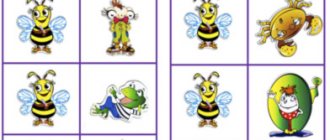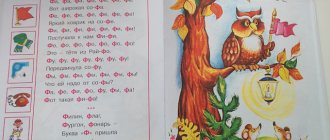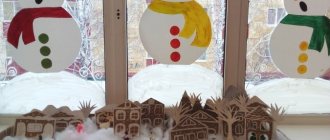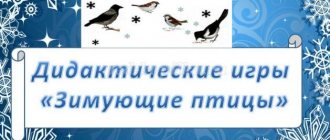Exercise “Repeat the same”
Goal: learn to reproduce a given rhythm. Materials: ball, drum, tambourine, metallophone, sticks. Progress of the exercise: The speech therapist sets the rhythm with one of the objects, the child must repeat the same.
Exercise “Count correctly”
Goal: learn to count sounds. Materials: children's musical and noise instruments, cards with numbers, cube with dots. Progress of the exercise: Option 1. The child claps his hands (knocks on a tambourine, etc.) as many times as there are dots on the cube. Option 2. The speech therapist plays sounds, the child counts them and picks up a card with the corresponding number.
Exercise “Choose a scheme”
Goal: learn to correlate the rhythmic pattern with its diagram on the card. Material: cards with patterns of rhythmic patterns. Progress of the exercise: Option 1. The speech therapist sets a rhythmic pattern, the child selects the appropriate pattern on the card. Option 2. The child reproduces a rhythmic pattern according to a given pattern.
Exercises at the sound level:
- “Say the sound A as many times as there are dots on the die. Make the sound O as many times as I clap my hands.”
- “Find out what sound (series of sounds) I made.” Recognition by silent articulation, pronunciation with voice.
- Determination of a stressed vowel in a stressed position (in a series of sounds).
Exercises at the syllable level:
– Pronounce a chain of syllables while simultaneously stringing rings onto a pyramid (building a tower from cubes, rearranging pebbles or beads) – “Fingers say hello” – pronounce a chain of syllables while touching the fingers of the hand with the thumb on each syllable. - Count the number of syllables spoken by an adult. – Name the stressed syllable in the chain of heard syllables. – Memorizing and repeating chains of different types of syllables.
Word level exercises:
Ball game
Goal: learn to clap the syllabic rhythm of a word. Material: ball. Progress of the game: the child beats the rhythm of the word given by the adult with the ball.
Game "Telegraph"
Goal: to develop the ability to divide words into syllables. Material: sticks. Progress of the game: the child “transmits” the given word by tapping out its rhythmic pattern.
Game "Count, don't make a mistake"
Goal: to learn to divide words into syllables while simultaneously performing a mechanical action. Material: pyramid, cubes, pebbles. Progress of the game: the child pronounces the words given by the speech therapist and lays out pebbles (pyramid rings, cubes). Compare words: where there are more pebbles, the word is longer.
Ball game "Pass it on"
Goal: to learn to divide words into syllables while simultaneously performing a mechanical action. Material: ball. Progress of the game: children pass the ball to each other and at the same time name the syllable of the given word.
Game "Say the correct word"
Goal: to learn to distinguish correctly sounding words. Material: pictures. Progress of the game: the speech therapist pronounces the words incorrectly, the child names the words correctly (if it is difficult for the child to complete the task, then pictures are given to help).
Exercise “What has changed?”
Goal: to learn to distinguish between different syllable structures of words. Material: pictures. Progress of the exercise: the child explains the difference between words. Words: cat, cat, kitten, house, house, house.
Exercise “Find the longest word”
Goal: to consolidate the ability to divide words into syllables. Material: pictures. Progress of the exercise: the child chooses from the proposed pictures the one that shows the longest word.
Exercise “Count, don’t make a mistake”
Goal: to strengthen children’s ability to divide words into syllables. Material: pictures, cards with numbers. Progress of the exercise: The speech therapist shows pictures, the children show a number corresponding to the number of syllables in a word (a complication option is the number of a stressed syllable).
Exercise “Which word is different”
Goal: learn to distinguish words with different rhythmic structures. Material: pictures. Progress of the exercise: the speech therapist names a series of words, the children identify the extra word (use pictures if the children find it difficult). Words: tank, crayfish, poppy, branch. Carriage, bud, loaf, plane.
Exercise “Name the same syllable”
Goal: to consolidate the ability to compare the syllabic structure of words. Material: pictures. Progress of the exercise: the child must find the same syllable in the proposed words (airplane, milk, straight, ice cream).
Game “The end of the word is yours”
Goal: learn to synthesize words from syllables. Material: ball. Progress of the game: the speech therapist begins the word and throws the ball to the child, he adds the same syllable SHA: ka..., va..., Yes..., Ma..., Mi...
The material was prepared by teacher-speech therapist O. B. Zhaivoronok.
Content
INTRODUCTION 5
FEATURES OF FORMATION OF THE SYLLABLE STRUCTURE OF THE WORD IN CHILDREN WITH SEVERE SPEECH IMPAIRMENTS 9
FEATURES OF IMFORMED SYLLABAL STRUCTURE OF A WORD AT DIFFERENT LEVELS OF GENERAL SPEECH UNDERDEVELOPMENT 9
METHODOLOGY FOR FORMING THE SYLLABIC STRUCTURE OF THE WORD IN CHILDREN WITH SEVERE SPEECH IMPAIRMENTS 10
Propaedeutic stage 11
Features of working with non-speaking children 11
Development of speech understanding in non-speaking children 12
Activation of speech imitation 13
Formation of the first forms of words 15
Features of the formation of the syllabic structure of words with a combination of consonants 17
Features of the formation of the syllabic structure of a word based on the material of phrasal speech 18
VOCABULARY TASKS 19
SOUND IMITATION 19
TWO-SYLLABLE WORDS FROM OPEN SYLLABLES 21
THREE-SYLLABLE WORDS FROM OPEN SYLLABES 24
ONE-SYLLABLE WORDS FROM CLOSED SYLLABLES 27
TWO-SYLLABLE WORDS FROM CLOSED SYLLABLES 29
TWO-SYLLABLE WORDS WITH CONSONANTS IN THE MIDDLE OF THE WORD AND AN OPEN SYLLABLE 33
TWO-SYLLABLE WORDS WITH CONSONANTS AT THE BEGINNING OF THE WORD AND AN OPEN SYLLABLE 36
TWO-SYLLABLE WORDS WITH A COLLECTION OF CONSONANTS IN THE MIDDLE OF THE WORD AND A CLOSED SYLLABLE 39
TWO-SYLLABLE WORDS WITH A COLLECTION OF CONSONANTS AT THE BEGINNING OF THE WORD AND A CLOSED SYLLABLE 42
THREE-SYLLABLE WORDS WITH A CLOSED SYLLABLE 44
THREE-SYLLABLE WORDS WITH CONSONANT COLLECTIONS (IN DIFFERENT POSITIONS) AND AN OPEN SYLLABLE 47
THREE-SYLLABLE WORDS WITH A COLLECTION OF CONSONANTS (IN DIFFERENT POSITIONS) AND A CLOSED SYLLABLE 49
ONE-SYLLABLE WORDS WITH A COLLECTION OF CONSONANTS AT THE BEGINNING AND END OF THE WORD 50
TWO-SYLLABLE WORDS WITH TWO CONSEQUENCES 52
THREE-SYLLABLE WORDS WITH TWO TEXT 53
FOUR SYLLABID WORDS FROM OPEN SYLLABLES 54
FIVE-SYLLABLE WORDS FROM OPEN SYLLABLES 56
FOUR SYLLABID WORDS WITH CLOSED SYLLABLE AND (OR) CONCLUSIONS 58
FIVE-SYLLABLE WORDS WITH CLOSED SYLLABLE AND (OR) CONCLUSIONS 60
WORDS WITH COMPLEX CONCLUSIONS (THREE OR MORE CONSONANTS IN A SERIES) 62
SENTENCES USING COMPLEX SYLLABILITY WORDS 64
Appendix 71
ILLUSTRATIONS FOR THE SECTION OF SOUND IMITATION 71
Didactic games for the preparatory group of kindergarten
Didactic games to develop the syllabic structure of words.
Author: Budilova Galina Evgenievna, teacher, secondary school 821, preschool department.
Didactic games are intended for children in the pre-school group. Game No. 1 “Syllable Dominoes”.
For the game we will need colored cardboard, object pictures, glue, scissors, and a simple pencil. We take colored cardboard, draw the reverse side of the colored cardboard into rectangles measuring 5x10 cm.
We cut the lined sheet of cardboard into cards.
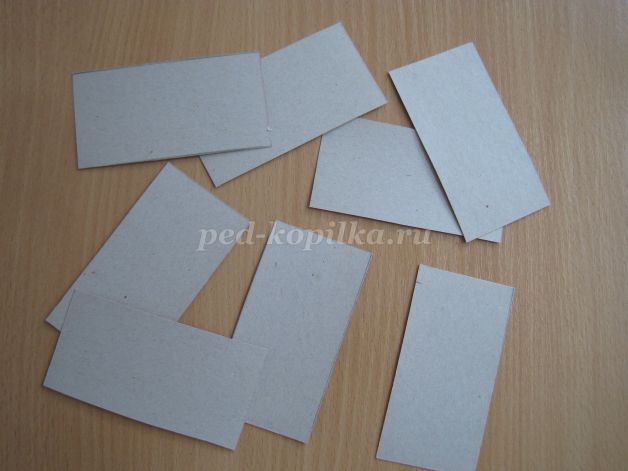
We cut out small subject pictures from old books and paste them on the colored side of the card, two at a time (left and right).
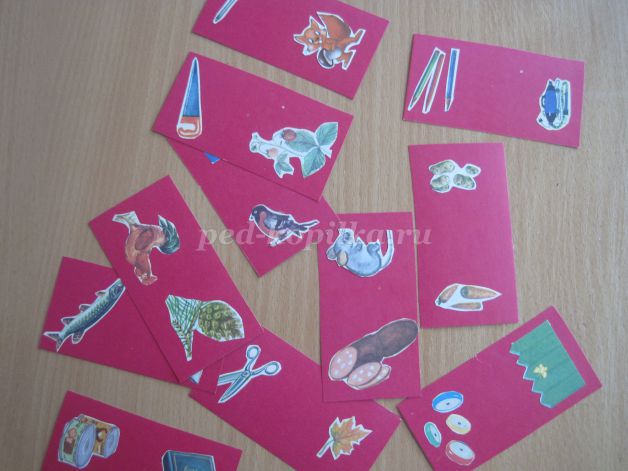
Purpose of the game: to strengthen the ability to divide words into syllables. Exercise children in determining the number of syllables in a word; in comparing the syllabic structure of various words; select pictures whose names have the same number of syllables. Develop speech, thinking, attention, phonemic hearing. Progress of the game: the child is asked to look at the cards - dominoes and lay out a chain of dominoes so that the number of syllables of the next word - name coincides with the number of syllables of the previous one. If the task is completed correctly, the chain will be closed, that is, the syllable structure of the name of the next picture will coincide with the syllable structure of the first.
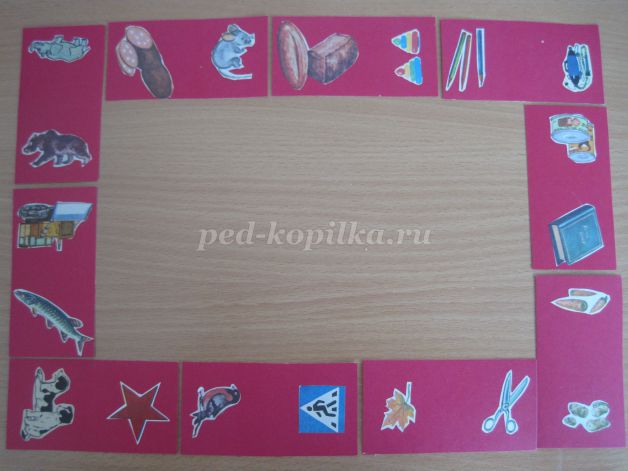
Game No. 2 “Flower Shop”.
To make the game we will need postcards, colored cardboard, glue, scissors, and a pencil. We take colored cardboard, and on the back side we draw the cardboard into rectangles measuring 14x10 cm.
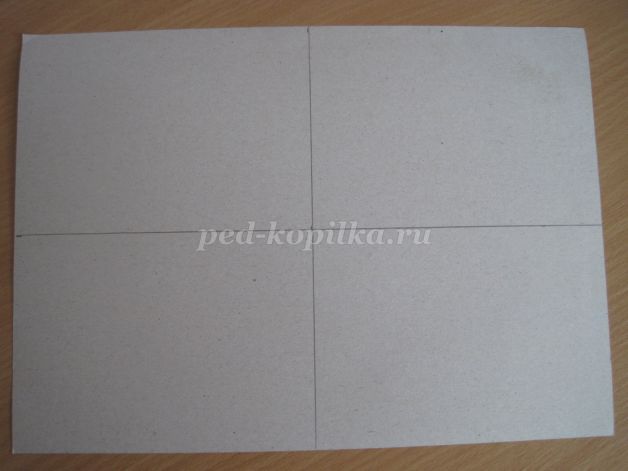
Cut the cardboard into rectangles.
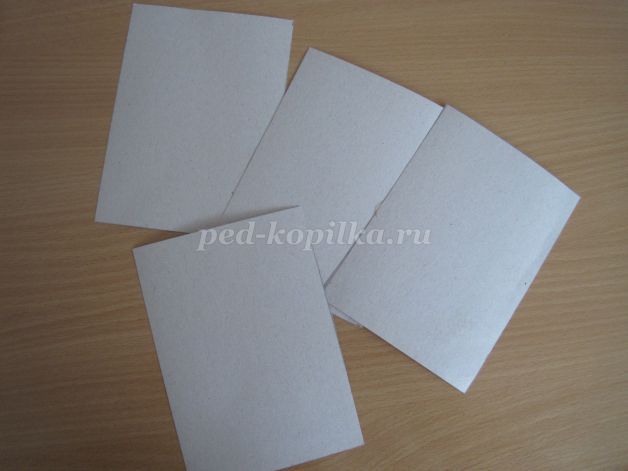
We glue flower cards onto the colored side of the cardboard rectangles.
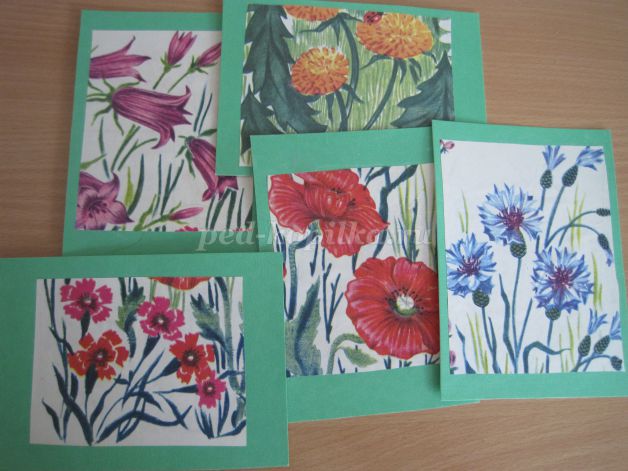
We take cardboard of a different color, draw the back side of the cardboard into rectangles measuring 3x8 cm.
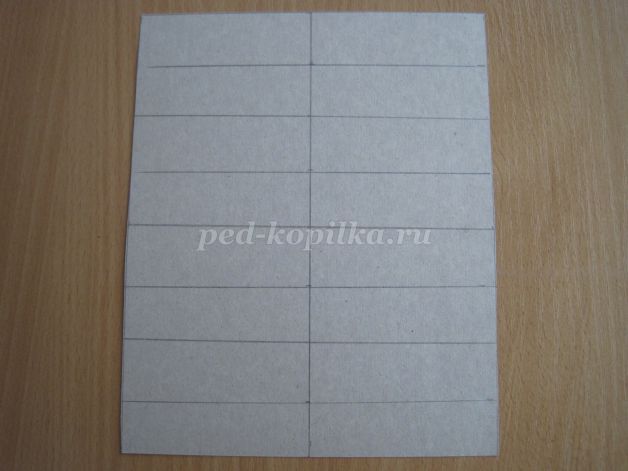
Cut the cardboard into cards.
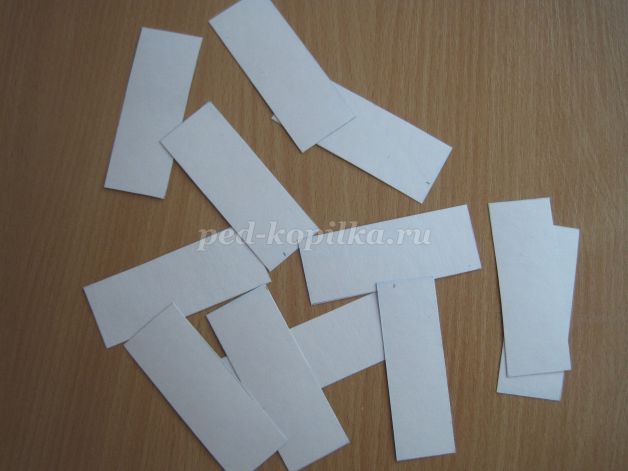
Glue circles on the colored side of the cards (1, 2, 3, 4).
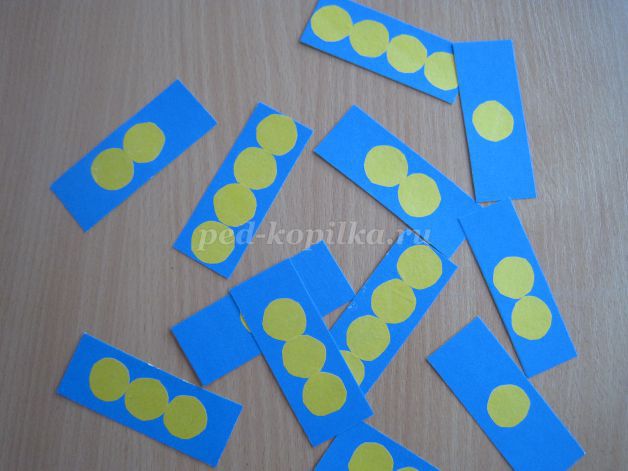
Purpose of the game: to consolidate the ability to divide words into syllables, to consolidate the names of colors in the children's dictionary. Develop speech, thinking, attention, phonemic hearing. How to play: Place cards with flowers on the typesetting canvas. The teacher says: “This is our flower shop, it sells different flowers. Some have short names, for example: peony; others with long names, for example: forget-me-nots. You each have a number card with circles. This is money". You will be the buyers, and I will be the seller. The buyer can only buy that flower whose name has as many parts (syllables) as there are circles on the card. You will come to the store, present a number card and say the name of the flower in parts. If you correctly determine which flower you can buy, you will receive it; if you are wrong, the flower remains on the counter.” At the end of the game, the teacher shows a number card and asks to name the purchased flowers, the names of which have as many syllables as there are circles on the card.
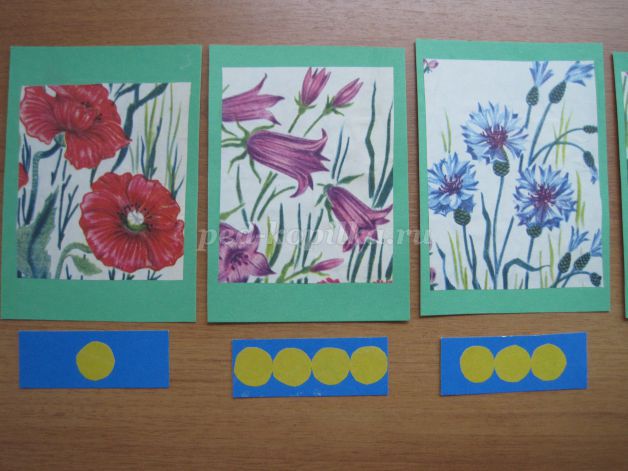
Game No. 3 “Three Lines”
For the game you will need colored cardboard, object pictures, scissors, glue, pencil. Take a sheet of cardboard and divide it into three parts.
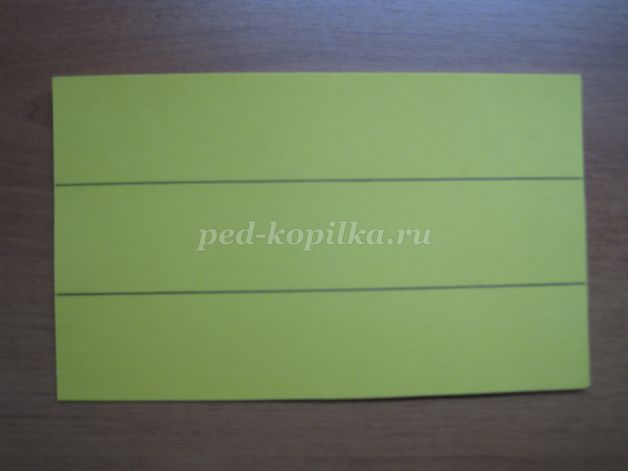
We take another sheet of cardboard and draw it on the reverse side into squares with a side of 5 cm.
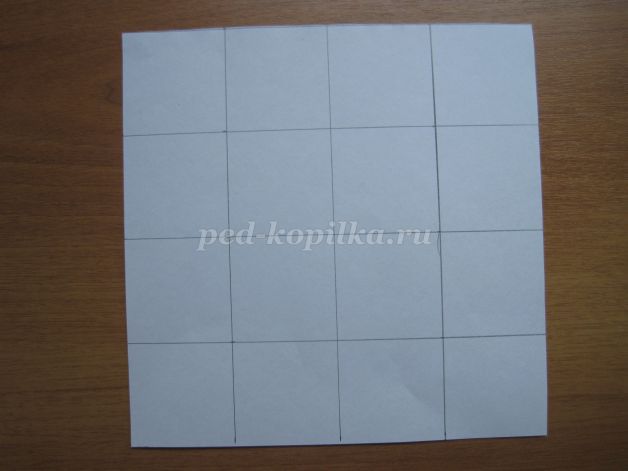
Cut the cardboard into squares.
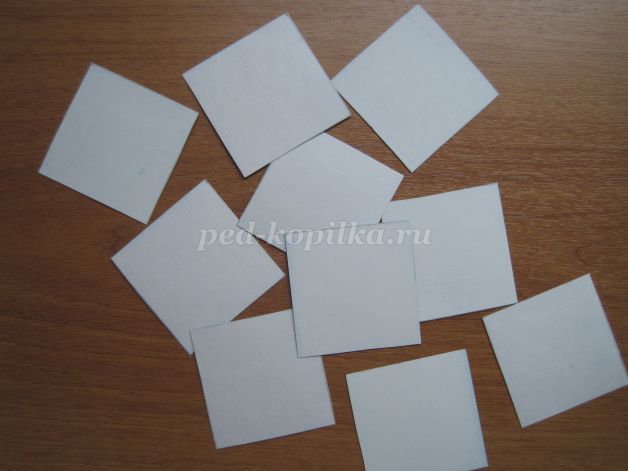
We paste object pictures onto the squares.
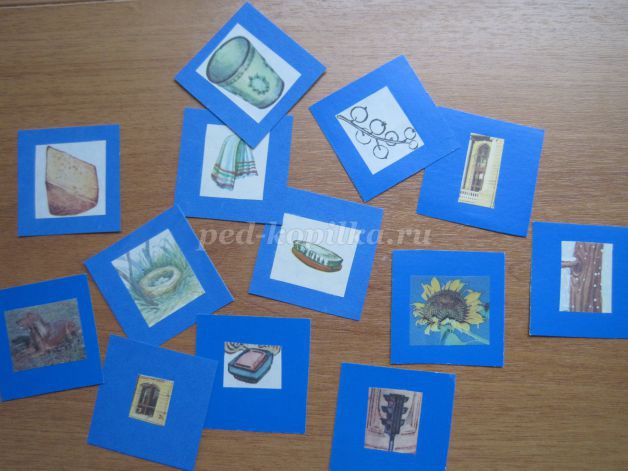
Purpose of the game: to train children in dividing words into syllables; determining the number of syllables in a word; find pictures whose titles have a certain number of syllables. Develop children's speech, cultivate attention and thinking. Progress of the game: children are given large cards, divided into three parts and subject pictures. Children should place pictures on the first line whose names consist of one syllable; on the second line put pictures whose names consist of two syllables; on the third - of three syllables.
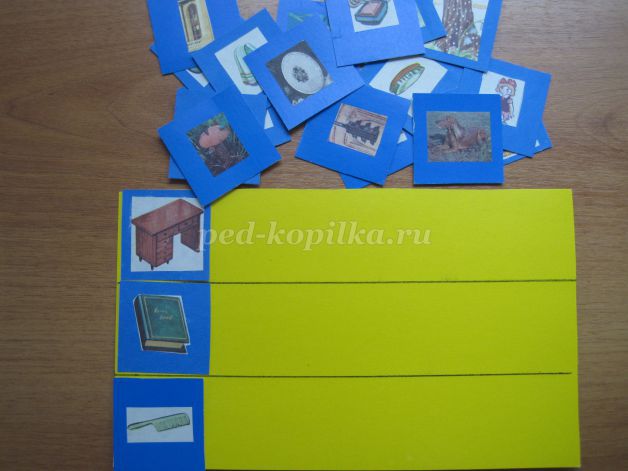
We recommend watching:
Didactic game with sounding objects for older preschoolers Didactic game for teaching literacy to older preschoolers Didactic game for teaching literacy to older preschoolers Lesson on speech development in the preparatory group. Spring
Similar articles:
Summary of an integrated educational activity in the preparatory group of children with a compensatory orientation “Visiting Winter”
Story-based didactic game for older preschoolers “We are traveling on a train”
Didactic games to familiarize yourself with flora and fauna for children of the senior preparatory group
